
An abbey is a type of monastery used by members of a religious order under the governance of an abbot or abbess. Abbeys provide a complex of buildings and land for religious activities, work, and housing of Christian monks and nuns.

The Benedictines, officially the Order of Saint Benedict, are a mainly contemplative monastic religious order of the Catholic Church for men and for women who follow the Rule of Saint Benedict. The male religious are also sometimes called the Black Monks, in reference to the colour of their religious habits, in contrast to other Benedictine orders such as the Olivetans, who wear white. They were founded in 529 by Benedict of Nursia, a 6th-century Italian monk who laid the foundations of Benedictine monasticism through the formulation of his Rule. Benedict's sister, Scholastica, possibly his twin, also became a religious from an early age, but chose to live as a hermit. They retained a close relationship until her death.

A monastery is a building or complex of buildings comprising the domestic quarters and workplaces of monastics, monks or nuns, whether living in communities or alone (hermits). A monastery generally includes a place reserved for prayer which may be a chapel, church, or temple, and may also serve as an oratory, or in the case of communities anything from a single building housing only one senior and two or three junior monks or nuns, to vast complexes and estates housing tens or hundreds. A monastery complex typically comprises a number of buildings which include a church, dormitory, cloister, refectory, library, balneary and infirmary, and outlying granges. Depending on the location, the monastic order and the occupation of its inhabitants, the complex may also include a wide range of buildings that facilitate self-sufficiency and service to the community. These may include a hospice, a school, and a range of agricultural and manufacturing buildings such as a barn, a forge, or a brewery.
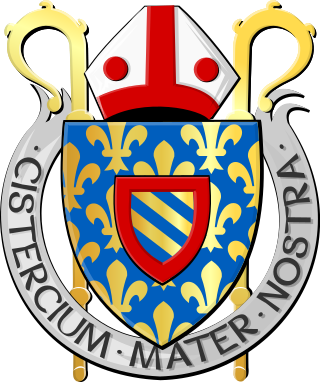
The Cistercians, officially the Order of Cistercians, are a Catholic religious order of monks and nuns that branched off from the Benedictines and follow the Rule of Saint Benedict, as well as the contributions of the highly-influential Bernard of Clairvaux, known as the Latin Rule. They are also known as Bernardines, after Saint Bernard himself, or as White Monks, in reference to the colour of the "cuculla" or cowl worn by the Cistercians over their habits, as opposed to the black cowl worn by Benedictines.

Christian monasticism is the devotional practice of Christians who live ascetic and typically cloistered lives that are dedicated to Christian worship. It began to develop early in the history of the Christian Church, modeled upon scriptural examples and ideals, including those in the Old Testament. It has come to be regulated by religious rules and, in modern times, the Canon law of the respective Christian denominations that have forms of monastic living. Those living the monastic life are known by the generic terms monks (men) and nuns (women). The word monk originated from the Greek μοναχός, itself from μόνος meaning 'alone'.

The Tironensian Order or the Order of Tiron was a medieval monastic order named after the location of the mother abbey in the woods of Thiron-Gardais in Perche, some 35 miles west of Chartres in France). They were popularly called "Grey Monks" because of their grey robes, which their spiritual cousins, the monks of Savigny, also wore.

Alberic of Cîteaux, sometimes known as Aubrey of Cîteaux, was a French monk and abbot, one of the founders of the Cistercian Order. He is now honored as a saint.
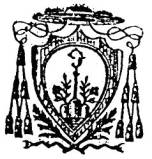
The Sylvestrines are a congregation of monks of the Order of St Benedict who form the Sylvestrine Congregation. The Sylvestrines use the post-nominal initials O.S.B. Silv.. The congregation was founded in 1231 by Sylvester Gozzolini. They are members of the Benedictine Confederation. The congregation is similar to others of eremitical origin, in that their houses are not raised to the status of an abbey, which would entangle the monasteries more strongly in the affairs of the world. The congregation, though, is led by an abbot general, the only abbot it has, who supervises all the houses of the congregation.

Pluscarden Abbey is a Catholic Benedictine monastery in the glen of the Black Burn, six miles southwest of Elgin, Moray, Scotland. It was founded in 1230 by Alexander II for the Valliscaulian Order.

Affligem Abbey is a Benedictine abbey in the municipality of Affligem, Flemish Brabant, Belgium, 19 km (12 mi) to the north-west of Brussels. Dedicated in 1086, it was the most important monastery in the Duchy of Brabant and therefore often called Primaria Brabantiae.

The Valliscaulian Order was a religious order of the Catholic Church. It was named after Vallis Caulium or Val-des-Choux, its first monastery, located in Burgundy. The order was founded at the end of the twelfth century and lasted until its absorption by the Cistercians in the eighteenth century.
Prior is an ecclesiastical title for a superior in some religious orders. The word is derived from the Latin for "earlier" or "first". Its earlier generic usage referred to any monastic superior. In abbeys, a prior would be lower in rank than the abbey's abbot or abbess.
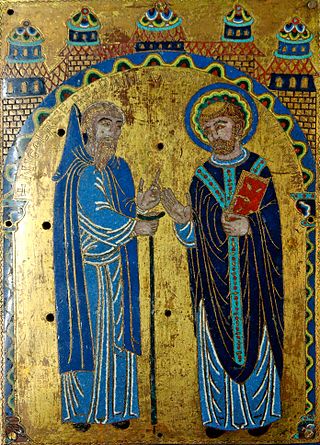
Stephen of Muret was the founder of the Abbey of Grandmont and the Order of Grandmont.
The name Boni Homines or Bonshommes was popularly given to at least three religious orders in the Catholic Church:
The Brothers of Penitence or Friars of the Sack were an Augustinian community also known as Boni Homines or Bonshommes, with houses in Spain, France and England.

Molesme Abbey was a well-known Benedictine monastery in Molesme, in Laignes, Côte-d'Or, Duchy of Burgundy, on the border of the Dioceses of Langres and Troyes.
The Subiaco Cassinese Congregation is an international union of Benedictine houses within the Benedictine Confederation. It developed from the Subiaco Congregation, which was formed in 1867 through the initiative of Dom Pietro Casaretto, O.S.B., as a reform of the way of life of monasteries of the Cassinese Congregation, formed in 1408, toward a stricter contemplative observance, and received final approval in 1872 by Pope Pius IX. After discussions between the two congregations at the start of the 21st century, approval was given by Pope Benedict XVI in 2013 for the incorporation of the Cassinese Congregation into its offshoot, the Subiaco Congregation. The expanded congregation was given this new name.
Bernard of Thiron, also known as Bernard of Ponthieu and Bernard of Abbeville, was the founder of the Tiron Abbey and the Tironensian Order.
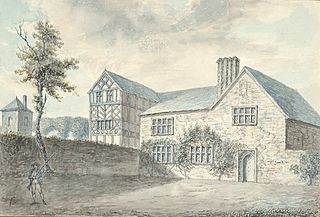
Alberbury Priory was a medieval monastic house in Alberbury, Shropshire, England, established c.1230. It was one of three houses in England belonging to the French Grandmontine Order.
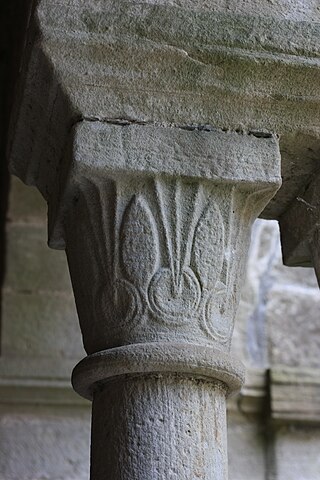
Saint-Michel de Grandmont Priory is a former monastery of the Order of Grandmont in the commune of Saint-Privat, in Hérault, France. The priory is located in a wild area at the heart of an oak forest, about 10 km from the town of Lodève.



















